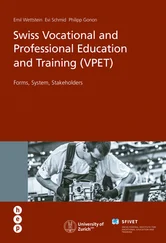Chairman
Berne, June 2016
Foreword by the president of Swissmem
The Swiss vocational education and training system, which is oriented towards the needs of the economy, offers numerous options for advanced education and training, and is strongly anchored in Swiss business culture and society, is unique in the world. Besides the technical abilities and competences, it is the soft skills acquired through productive work during their training that transform young people who have completed their primary school education into sought-after employees: they meet customer requirements, act independently, find creative solutions and have a high awareness of quality. Innovative ability and increased productivity based on these attributes are also key factors for the sustained competitiveness of the Swiss electrical and mechanical engineering and metal industries.
Swiss companies are aware of the value of vocational education and training (VET), and are therefore willing to invest in the education and training of professionals. Globally active companies have started establishing worldwide training systems in their organisation structures. For this reason, Swissmem has also been called upon to assist in the international education and training activities of its member companies.
The Swiss Vocational Education and Training Initiative India is a good example. Thanks to the close cooperation among VET experts in Switzerland and India, the commitment of Swiss subsidiaries in India and cooperative government authorities and institutions in both countries, VET programmes have been set up to help meet the urgent need for highly trained personnel. I hope this project will continue to flourish and will set a precedent in other countries as well.
Hans Hess
President of Swissmem
Zurich, June 2016
Foreword by the chairman of NSDA and NSDC
Greetings from India!
As one of the largest and most ancient nations in the world, India is at a very interesting juncture, as it is also becoming one of the ‹youngest› nations when you consider the average age of its citizens. Millions of young Indians are entering the workforce – 12 million each year to be exact. India’s growing economy is demanding skilled people all the way from ‹shop floors to top floors›. Just like the many Indians who leapfrogged to mobile phones, bypassing traditional landlines, so too in terms of skills we need to leapfrog to a generation with 21 stcentury skills.
The Swiss Vocational Education and Training Initiative India (SVETII) is therefore the right solution at the right time. There is much to learn from the Swiss dual-track model, where both government and industry roles are well understood and where both feel equally responsible. The apprenticeship model has great potential in India but will take time to take root because of the inherent complexities of the system. But there is no better way to learn than by doing, and this is being increasingly understood here in India.
By working together with Indian industry and other stakeholders, the Swiss Vocational Education and Training Initiative India will gain more and more ground. I would urge the Swiss government and Swiss industry to build stronger ties with their counterparts in India in order to bring about a mutually beneficial relationship.
I wish the Swiss Vocational Education and Training Initiative India the very best – I have no doubt that it will succeed.
Subramaniam Ramadorai
Chairman, National Skill Development Agency (NSDA), India
Chairman, National Skill Development Corporation (NSDC), India
Mumbai, June 2016
Introduction by the editors
Vocational education and training has become a very important topic since the beginning of the 21 stcentury (OECD 2015; Biavaschi et al. 2012; Hoffman 2011; OECD 2010a; OECD 2010b). This is firstly related to the somewhat precarious youth employment situation, and secondly to emerging economies being unable to find qualified professionals in various industry segments (McKinsey 2012). While the general level of education has increased in almost all countries, the qualification profiles of young educated professionals often do not match the competences demanded by the labour market.
India, as an emerging economy, is one of the countries making rapid strides in this field. Globalisation as well as economic and social interdependence are reflected in the organisational structure, while the need for qualified professionals is just as varied. The thriving business relations between Switzerland and India are testimony to this development. Export relations as well as direct investments have intensified in the past few years. These developments are expected to be sustained, and emerging countries in particular are expected to be among the economic superpowers of the future. Swiss industry is therefore interested in good trade relations with these countries, and is stimulating bilateral relations through different measures.
Gaining the quality edge in competition requires qualified personnel
The Swiss economy is one of the most competitive in the world (Schwab, Sala-i-Martín, & World Economic Forum 2014). Its comparative advantages vis-à-vis international competitors are often due to its qualitative prominence rather than due to price (Strahm 2008, p. 159). To ensure high quality is achieved worldwide, even international Swiss companies have to rely on highly qualified personnel. The recruiting of academically qualified professionals does not usually pose a problem. However, there is a lack of qualified professionals with practical expertise who can measure up to the technological state of development of Swiss companies. Yet they are indispensable in order to exploit the growth potential in the country.
The shortage of qualified professionals with practical education and training to a high technological standard is generally one of the biggest challenges in emerging economies. The reasons for the shortage of such professionals are many, some of which include the structure of the education system, the employment market regulations or the fact that the local industry does not predominantly manufacture to the same technological standards as the international companies based there. While governments invest a lot in general education and academic fields in most countries, the simultaneous development of a vocational education and training system oriented towards the needs of the employment market is neglected.
India is regarded as the country with the least proportion of youth being trained in vocational education and training (Mehrotra et al. 2014). On average, only about two per cent of the people employed in India have undergone vocational education and training (Mehrotra 2014). There are various reasons for this. The education system of countries with a colonial background is characterised by the colonial power’s historical type of education system. Lang-Wojtasik (2013) considers this as a crucial characteristic «in which notions about education are institutionalised to promote colonial management. There have been significant attempts particularly in the area of higher education to establish national educational institutions that embody a national mindset and the principles of colonial power» (p. 217). In India’s case, it is the British education system which has exerted an enduring influence. Education, including vocational education and training, takes place in the context of schools or universities. Consequently, the discrepancy between supply and demand in the job market is largely dependent on the country and the economy’s level of development. A so-called skills mismatch is prevalent (OECD 2015; ILO 2014). This does not apply to emerging economies alone; it can even be seen in Europe or in North America (Renold et al. 2014, Manufacturing Institute 2011). This disparity between academically educated professionals and the demand in the job market has been further aggravated in many European countries by the current economic difficulties.
Читать дальше












